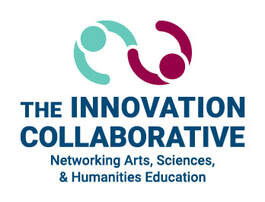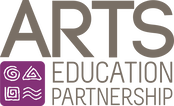|
By Mary Dell’Erba STEM Education has captured the attention of state policymakers who are concerned about preparing students for an evolving workforce. By 2030, the Institute for the Future estimates that 85 percent of the jobs that today’s K-12 learners will be doing haven’t been invented — demanding a workforce that is creative and prepared to respond innovatively to real-world problems. Thanks to generous support from the National Endowment for the Arts and the U.S. Department of Education, the Arts Education Partnership (a member of the Innovation Collaborative) has been expanding its work to explore the role of the arts in STEM. Since 2018, AEP has been exploring opportunities for STEAM in state and federal policy, and across the K-12 and higher education spectrums. In March, 2019, AEP released two new resources—a new report, Policy Considerations for STEAM Education, as well as a companion infographic. The infographic is a shareable tool that provides a baseline definition for STEAM, describing STEAM as creative, experiential, inquiry-based, and interdisciplinary.
The new report explores policy considerations in the way states are implementing policies to support STEAM education. The first consideration is how states are providing access. States such as Ohio and Georgia have implemented systems for STEM school certification that include the arts, allowing schools and programs to be recognized for their commitment to STEAM education. Nevada adopted a STEAM diploma endorsement, which requires students to demonstrate advanced achievement in STEAM subjects. The second consideration in state policy looks at how states are funding STEAM programs through federal, state and local sources. The Every Student Succeeds Act provides many opportunities for states to support a well-rounded education through Title I, Title II, and Title IV funds. States have also identified creative ways to fund STEAM education through formula funding, career and technical education funds, state grants, and specific STEAM line items in their state education budgets. Finally, some states are taking unique and meaningful approaches to improving statewide coordination of the development and implementation of STEAM policies. From legislators in Nevada to the chief state school officer in Ohio, leadership at the state, district, and local levels have advanced STEAM education efforts. States such as Georgia and South Carolina have implemented approaches that offer a common language and statewide consistency for STEAM education in elementary, middle, and high school. Though states have implemented policies related to access, funding, and coordination of state leadership, the analysis revealed that states are just beginning to include the arts in STEM policies and that more questions than answers currently exist. To address these questions, the Arts Education Partnership and Education Commission of the States convened 14 leaders (including from the Innovation Collaborative) to look beyond current state policy and explore new opportunities in STEAM. Conversations at this Thinkers Meeting focused on the perspectives of researchers, policymakers, and practitioners. Collectively, the group considered questions to guide future work:
In September 2019, AEP released a policy brief, Preparing Students for Learning, Work and Life Through STEAM Education, to summarize the conversations at this meeting. The meeting participants found that in an increasingly diverse and technologically advanced world, STEAM education helps students build the transferable skills needed for success in the evolving workforce. They noted that the unique value of STEAM education is in the transdisciplinary thinking that occurs when creative and analytical thought occur simultaneously. Analytical thinking — most often associated with the STEM subjects — and creative expression — most often associated with the arts — combine to foster innovation. They pointed out that the arts hone skills such as active listening, social and emotional learning, divergent thinking, and cultural competency, all skills that enhance future STEM and arts careers. To overcome barriers to effective implementation of STEAM education, they suggested that decisionmakers can develop a unified vision, improve quality, build connections and capacity, collect data, and clarify funding pathways. Participants noted that while local, state, and federal policymakers recognize the value of STEAM learning and have begun to incorporate the arts into STEM policies, more research is needed to support these efforts. Opportunities remain for decisionmakers at all levels to articulate a shared definition of STEAM education and to implement policies to that address common barriers. Considered individually, STEM education and the arts can address many of these challenges, but a well-rounded STEAM education is worth much more than the sum of its parts. If you’d like to learn more about AEP’s STEAM work, please contact Mary Dell'Erba at [email protected]. Mary Dell’Erba is the Senior Project Manager for AEP. The Arts Education Partnership is a coalition of more than 100 organizations dedicated to advancing the arts in education through research, policy, and practice. It works in partnership with the Education Commission of the States.
0 Comments
Your comment will be posted after it is approved.
Leave a Reply. |


